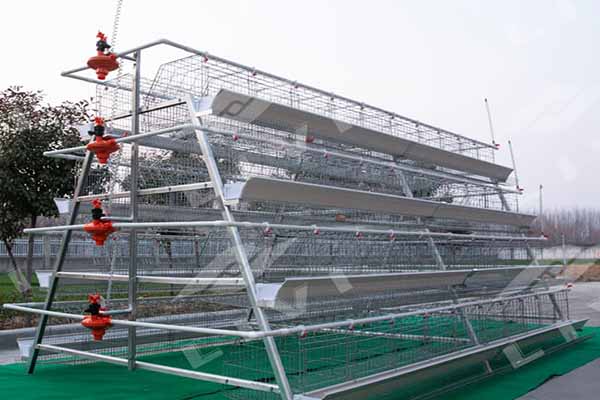Poultry Cage Systems for 40,000 Birds in South Africa: A Comprehensive Guide
Understanding Poultry Cage Systems
Poultry cage systems are crucial for efficient and hygienic bird management in large-scale poultry farming operations. In South Africa, where intensive farming is prevalent, setting up a system that can accommodate up to 40,000 birds is a significant undertaking. This guide explores the key components and considerations for designing a poultry cage system tailored for this scale.
Key Components of Poultry Cage Systems
- Cage Design: The design should prioritize bird comfort, space, and health. For 40,000 birds, it is essential to ensure each bird has ample space for movement and to prevent overcrowding.
- Material Quality: High-quality steel is recommended for durability and resistance to corrosion, a crucial factor in South Africa’s climate.
- Automation: Automated feeding, watering, and waste management systems are highly beneficial for managing a large flock.
- Airflow and Temperature Control: Proper ventilation and temperature regulation are essential for maintaining optimal conditions for the birds.
- Sanitation: Regular cleaning and disinfection of the cages are vital to prevent disease outbreaks.
Case Study: A 40,000-Bird Poultry Farm in South Africa
Consider a case study where a South African poultry farm successfully implemented a poultry cage system for 40,000 birds. The farm’s management adopted the following strategies:
– Optimized Cage Layout: The farm used a 4-level cage system with automated feeders and waterers on each level, minimizing manual labor and increasing efficiency.
– Advanced Sanitation: The farm implemented an automated cleaning system to ensure regular sanitation, reducing the risk of disease.
– Energy Efficiency: By integrating solar panels and energy-efficient lighting, the farm minimized operational costs.
Benefits of a Well- Designed Poultry Cage System
– Increased Productivity: Efficient cage systems lead to healthier birds, resulting in higher egg production or meat yield.
– Cost Savings: By reducing labor and energy costs, well-designed systems can significantly lower operational expenses.
– Reduced Disease Outbreaks: Proper ventilation, sanitation, and temperature control contribute to a healthier environment for the birds.
Conclusion
Setting up a poultry cage system for 40,000 birds in South Africa requires careful planning and investment. By considering the key components, learning from successful case studies, and focusing on productivity, cost savings, and disease prevention, poultry farmers and investors can create a sustainable and profitable operation.
For a personalized and free poultry cage system design and equipment quote, feel free to contact us at Livi Machinery. Our experts are ready to assist you in achieving your poultry farming goals.





